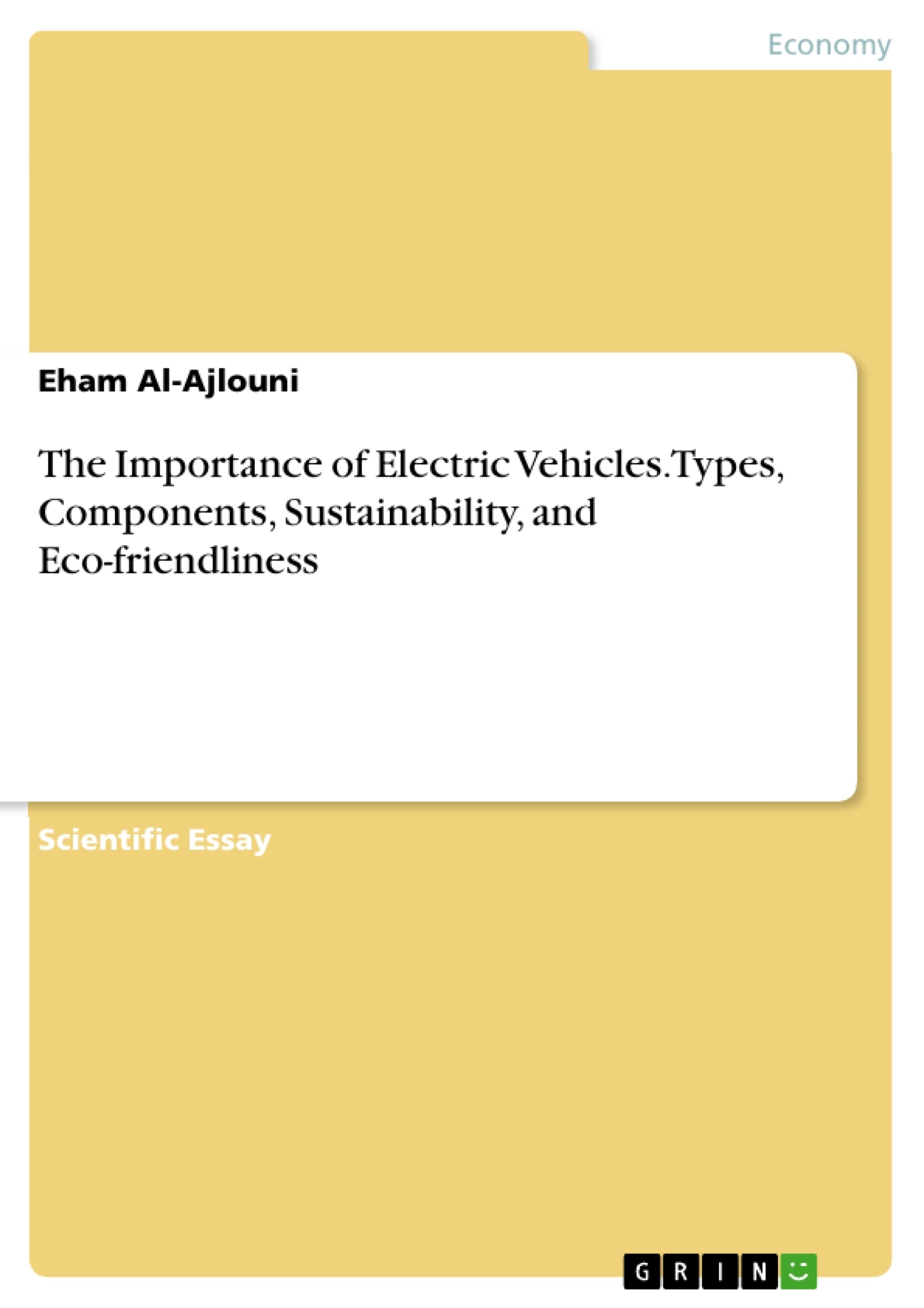This article aims to shed light on the importance of electric vehicles; their types, components, amount of CO2 emissions of electric cars; their sustainability, and eco-friendship. The primary greenhouse gases in Earth's atmosphere are water vapor, carbon dioxide (CO2), methane (CH4), nitrous oxide (N2O), and ozone (O3). In absence of greenhouse gases, the average temperature of Earth's surface could be −18 °C (0 °F), rather than the present average of 15 °C (59 °F). But despite that greenhouse gas emission data changes because of the development of new sources and markets like the growing market for liquefied natural gas.
Climate change combines global warming and its impacts on Earth's weather patterns, in which the main source is human-induced changes. The emission of greenhouse gases, mostly carbon dioxide (CO2) and methane (CH4) caused climate changes. Burning fossil fuels for energy utilization creates most of these emissions. Also, agriculture, forest loss, cement production, and steelmaking are additional sources. According to the WHO, air pollution is a major environmental health risk that causes approximately two million premature deaths universally per year. Ozone, fine dust, SO2, and NO2 were found by WHO as being the most dangerous pollutants which are mainly, or to a substantial extent, traffic-derived, in which traffic is responsible for approximately half of the quantified costs in lives and health. Furthermore, toxic internal combustion engine vehicle emissions cause high health losses even in industrialized countries: almost 25% of the European Union population live adjacent to (less than 500 m) a traffic road carrying more than three million vehicles each year. Also, a report by the European Union stated that the transport sector is responsible for nearly 28% of the total CO2 emissions, whereas, road transport is accountable for over 70% of the transportation emissions. While in Germany, the German Federal Environment ministry (2010) stated that cars were responsible for 60% of all traffic-related CO2 emissions.
Table of contents
Abstract
1. Introduction
2- Significant alternative fuel sources
2.1 Electricity
2.2 Natural gas
2.3 Biodiesel
2.4 Hemp biodiesel and hemp ethanol/methanol
2.5 Ethanol
2.6 Methanol
2.7 Solar power
2.8 Hydrogen
3. What is an electric Vehicle?
3.1 History
3.2 Types of electric vehicles (EVs)
3.3 Components of EV
3.4 How Do All-Electric Cars Work?
3.5 Characteristics of electric vehicles
4. Electric Vehicles and Environment
4.1 Well-to-wheel efficiency of electric cars
4.2 Emissions
4.3 Euro 7 Emission Standards for Vehicles
4.4 Greenhouse gas emissions of electric cars in operation
5. Life cycle assessment of electric cars
5.1 CO2-life cycle impact of the converted Smart (BEV vs. ICEV)
5.2 Life cycle impact of plug-in hybrid electric vehicles (PHEV)
5.3 Life cycle impact categories other than global warming potential (GWP)
6. Sustainability
6.1 A Green Cycle for EV Batteries
6.3 Strategy for sustainable electric vehicles
7. Is an electric car a green car?
7.1 Green Fuel
7.2 Green car
8. Conclusions
References
- Arbeit zitieren
- Dr. Eham Al-Ajlouni (Autor:in), 2022, The Importance of Electric Vehicles. Types, Components, Sustainability, and Eco-friendliness, München, GRIN Verlag, https://www.grin.com/document/1271996
-

-

-

-
Laden Sie Ihre eigenen Arbeiten hoch! Geld verdienen und iPhone X gewinnen. -

-
Laden Sie Ihre eigenen Arbeiten hoch! Geld verdienen und iPhone X gewinnen. -

-
Laden Sie Ihre eigenen Arbeiten hoch! Geld verdienen und iPhone X gewinnen. -

-
Laden Sie Ihre eigenen Arbeiten hoch! Geld verdienen und iPhone X gewinnen. -

-
Laden Sie Ihre eigenen Arbeiten hoch! Geld verdienen und iPhone X gewinnen. -

-
Laden Sie Ihre eigenen Arbeiten hoch! Geld verdienen und iPhone X gewinnen. -

-
Laden Sie Ihre eigenen Arbeiten hoch! Geld verdienen und iPhone X gewinnen. -

-
Laden Sie Ihre eigenen Arbeiten hoch! Geld verdienen und iPhone X gewinnen. -

-
Laden Sie Ihre eigenen Arbeiten hoch! Geld verdienen und iPhone X gewinnen. -

-
Laden Sie Ihre eigenen Arbeiten hoch! Geld verdienen und iPhone X gewinnen.

